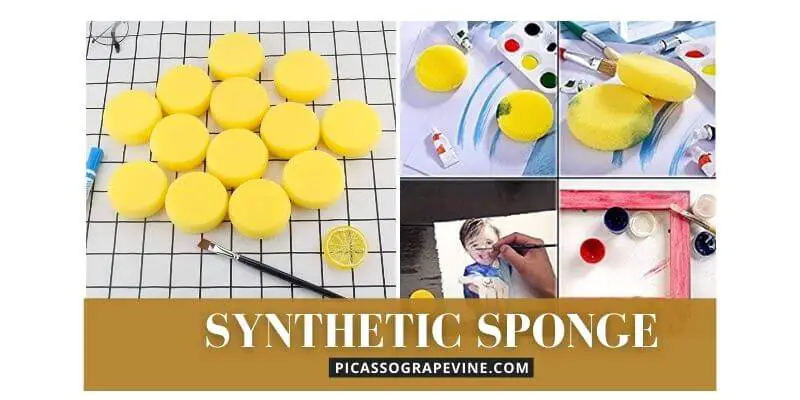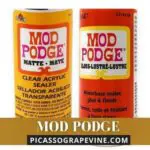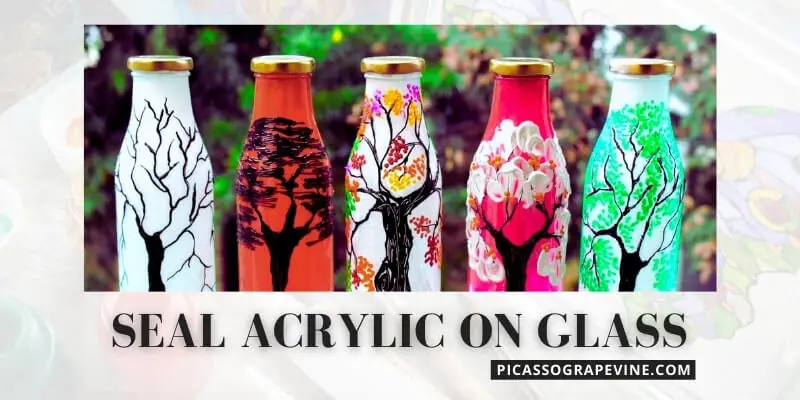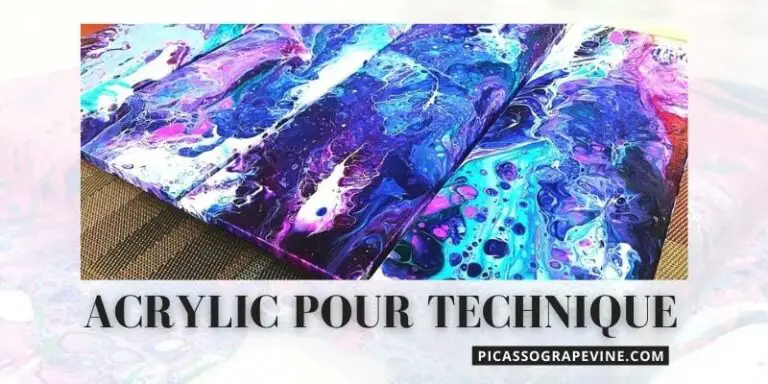Easy Guide to Sealing Acrylic Paint on Glass
Quick Guide to Sealing Acrylic Paint on Glass. Acrylic paint is a versatile medium, and you can use it on many different surfaces. One of the more unusual materials for acrylic painting is glass!
Acrylic paints work well with glass because they are less likely to crack or peel off over time. However, if you want your surface to last as long as possible, there are some things you should do before painting it with acrylics.
This article will give you an overview of 5 steps that will help seal acrylic paint onto glass.
What You’ll Need
- Paper Towel, Newspaper or Plastic Garbage
- Brush
- Synthetic Sponge
- Polycrylic Spray Gloss
How to Sealing Acrylic Paint on Glass ?
Step One: Clean your glass thoroughly
Ensure that all dirt, dust particles, and remove other contaminants from the surface of the glass before painting it.
Use a window cleaner to remove any icky smears or streaks on your glasses; make sure to get both sides! Using water sometimes leaves spots behind, so you may want to use a commercial-grade absorbent cloth instead if possible.
You can also wipe down with rubbing alcohol for an extra cleaning boost but be careful not to drip anything onto your freshly painted surfaces!
Before starting this step, gather some paper towels, newspaper, and plastic garbage bags, which will come in handy later when we clean up any messes or spills (if they happen!).
Step Two: Apply two thin coats of acrylic paint to the surface.
You may want to do this in a well-ventilated space
The first coat should be thin and not go all the way to the edges of your glasses. You want an even layer, but it’s OK if a few brush strokes show up because you’ll paint over them in the second pass with another thinner coat (or two).
Use flat kabuki or synthetic sponge for this step, dabbing to avoid brush marks as much as possible.
Let it dry overnight before moving on! This way will depend on how thickly you apply each layer, so check back after 12 hours or connect.
Also Read: Learn how to do acrylic pour painting techniques with this step-by-step guide.
Step Three: Apply one more light coating.
Apply one more light coating of acrylic paint using either a spongy applicator like Flat Kabuki Brush or by using a synthetic sponge. Buy synthetic sponge for painting in bulks here.

This coat should be thin and do not overdo it because you want the paint to dry quickly before moving on to your next step. So let’s call this one “Touch up.” (Pun intended!)
The key here is, again, no brush strokes! You can use an old credit card (or other flat plastic) as long as it isn’t too thick or rigid that will cause marks in your final product. But, again, dabbing with minimal pressure will help avoid these issues from happening at all.
Step Four: Seal Acrylic Paint on Glass with Polycrylic Spray Gloss Finish
Sealing Acrylic Paint on Glass is now complete, but if you’re going for something extra glossy, a polycrylic spray gloss finish will do the trick.
There are two ways to go about this:
1. Use an aerosol can and spray evenly in a circular motion. Ensure that all areas of your painting have an even layer of the product on each side. Make sure not to add too much because it’s easy to overdo it!
This way is kind of like spraying hairspray onto your hair before you hit up a club. You want just enough to not attract any unwanted attention/comments from others, but more than necessary isn’t going to make you look better either.
2. The other option is using our Glass Spray Bottle and applying polycrylic directly onto the glass surface where the applied acrylic paint was previously. This way is a little more time-consuming, but the results are worth it.
You’ll want to use an even, circular motion when spraying and then let it dry for at least 24 hours before handling your artwork again. If you don’t wait long enough after sealing with polycrylic spray gloss finish, there’s no telling what may happen!
The acrylic paint will most likely start coming off or lifting from the glass surface where applied previously because this product doesn’t allow liquid substances to penetrate through once dried.
Step Five: Finishing The Acrylic Paint on Glass
Lastly, after allowing your acrylic paint to dry for 24 hours or more, you’ll want to use a clean cloth and wipe away any excess water droplets from the surface of the glass.
The polycrylic spray gloss finish is solvent-based, so it will dissolve in water quickly, which means there’s no need to worry about an unsightly lap mark left behind on your piece, but if one does happen, don’t panic!
You can always buff out these marks with some steel wool pads until they’re gone. Just be sure not to apply any additional pressure when doing this because that could lead to cracks forming your artwork.
Read our other acrylic painting guides.
FAQ (Frequently Asked Questions)
What can I use to seal acrylic paint on glass?
You could try spraying your finished artwork with Krylon’s Crystal Clear Acrylic Spray.
It is water-based and obvious, which means that the only thing you will need to worry about when applying it over an already painted surface is any extra brushstrokes or drips of color remaining in a scene after completion.
This type of product also has no odor, so if you try to protect against fumes from oil paints or other smoke/fume-based products, this would be one option worth considering!
Can I use Mod Podge to seal acrylic paint on glass?
Yes! You can seal your project with Mod Podge Clear Acrylic Sealer. You can choose matte or gloss finish. Be sure to review the manufacturer’s recommendations before applying.
What is Mod Podge?

Mod Podge is all-purpose glue made from synthetic resins in the form of a liquid or gel medium. The product is an alternative to traditional varnish for finishing furniture. Originally called “rayon finish,” it dries clear and has good adhesion properties when dry.
Personally we recommend this product
1. Matte Finish: Mod Podge Matte Finish
2. Gloss Finish: Mod Podge Gloss Finish
What is a suitable sealant for acrylic paint?
The best sealant for acrylic paint is a 100% Acrylic Solvent-Free Sealer. This type of sealer will not yellow or crack over time as latex-based sealers do.
It’s also more resistant to UV rays than water-based sealers, which means it will last longer and won’t be as prone to fading.
Can you cure acrylic paint on glass?
The question of whether or not it’s possible to “cure” an acrylic paint that has peeled off a surface can be answered with perhaps and maybe, as there are no definitive answers at this time.
Some people have reported success in removing the top layer of dried-up spray paint by scrubbing/cutting small areas away.
In comparison, others have found their floors badly damaged without significant change to remove such old layers.
There may be nothing wrong with trying out different methods if one doesn’t feel 100% confident about what will work best (without causing more damage than was there, to begin with).
Still, it may also be best not to bother and instead look into the costs of replacing the damaged floor.



Thanks for your blog, nice to read. Do not stop.